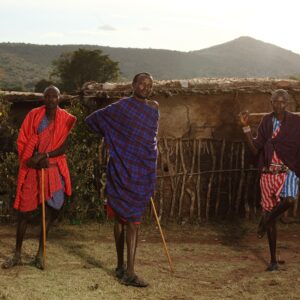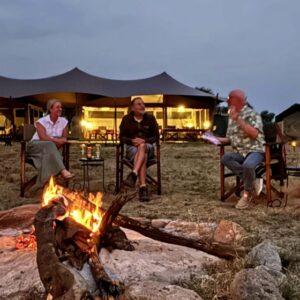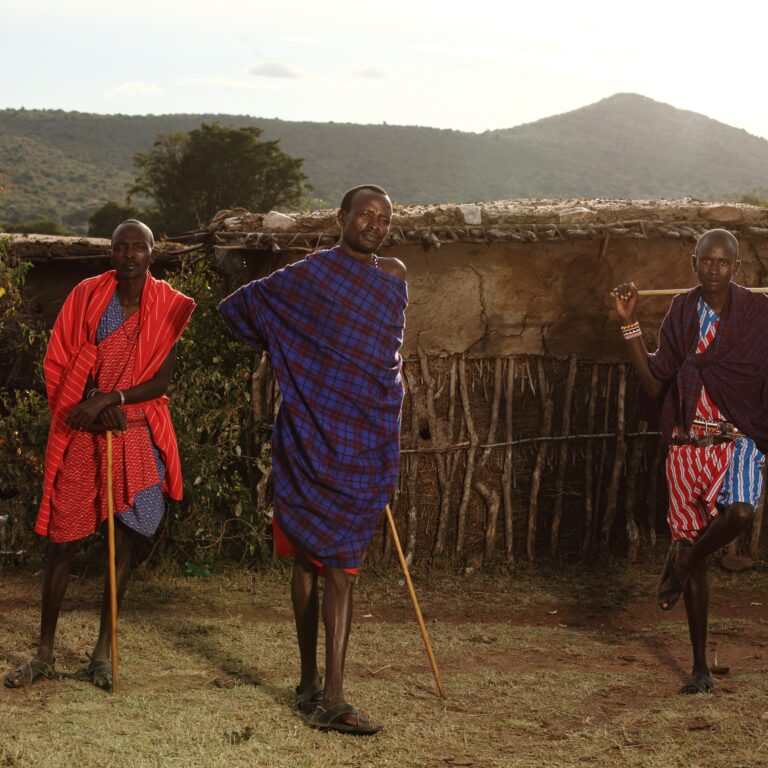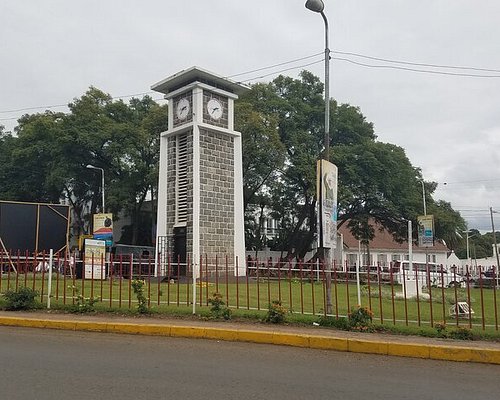Africa the very name vibrates with the promise of raw beauty, dramatic landscapes, and an untamed wild that stirs the soul. For photographers, it’s not just a destination; it’s the ultimate canvas, a crucible of light, life, and unforgettable moments waiting to be captured through the lens. But with a continent so vast and diverse, the question inevitably arises: “Where do I go to truly capture the magic of an African safari? While the continent boasts countless incredible photographic hotspots, this guide will focus on a country that consistently delivers unparalleled visual returns: Tanzania. From its iconic northern plains to its remote southern wildernesses and unique cultural landscapes, Tanzania offers a spectrum of environments tailored for every photographic ambition, ensuring your journey yields a portfolio brimming with impactful images.
The Photographic Safari Mindset: Beyond the Snapshot
A photographic safari is a specialized pursuit. It demands more than just pointing and shooting. To truly capture the essence of Africa, cultivate these principles:
Master the Light. The African sun is your greatest ally and adversary. Embrace the “golden hours” of early morning and late afternoon for soft, warm, directional light that sculpts your subjects. Learn to work with harsh midday light for high-contrast, dramatic effects, or retreat to shaded areas for softer portraits. Patience and Anticipation. Wildlife rarely poses on command. True photographic success comes from observing animal behavior, anticipating their next move, and being ready to capture the decisive moment. Composition is Key. Don’t just focus on the animal. Think about the environment, leading lines, rule of thirds, negative space, and framing. A compelling composition elevates a simple animal shot into a work of art.
Ethical Photography. Your presence should never disturb the wildlife. Always maintain a respectful distance, avoid sudden movements or loud noises, and follow your guide’s instructions implicitly. The well-being of the animals comes first. Gear Preparedness | Protect your equipment from dust, heat, and moisture. Have extra batteries and plenty of memory cards. A beanbag is invaluable for steadying long lenses from a vehicle. Now, let’s explore Tanzania’s premier photographic destinations, each offering a unique visual narrative.
1. Serengeti National Park: The Grand Epic
The Serengeti photographic destinations for Capturing the Magic of an African Safari. The very name evokes grandeur. As the stage for the Great Wildebeest Migration, it offers a dynamic, ever-changing photographic feast that is unparalleled. The Photographic Essence. This is where you come for epic scale. Wide-angle shots of vast plains teeming with herds. Telephoto close-ups of raw predator action. The iconic drama of river crossings. The Serengeti offers a complete narrative of life and survival in the wild.
Key Photographic Subjects & Strategy:
The Migration. (Seasonal) Focus on capturing the sheer numbers, the dust kicked up by millions of hooves, and the dramatic river crossings (Mara River in the north, Grumeti in the west). Anticipate crossing points and set up early. Big Cats. The open plains and scattered kopjes (rocky outcrops) make for excellent lion, leopard, and cheetah sightings. Look for leopards draped over acacia branches (Seronera Valley is famous for this). Cheetahs on their hunting stalks on the open plains are highly photogenic. Landscapes. Utilize the vast, flat horizon for sweeping panoramas. Frame animals against dramatic sunsets or sunrises. The unique shapes of kopjes make for interesting compositions.
Tips for Photographers:
A reliable, fast-focusing telephoto lens (e.g., 100-400mm or 150-600mm) is a must. Don’t forget a wide-angle for those expansive landscapes.
Invest in dust covers for your camera and lenses, and carry a good blower brush.
2. Tarangire National Park: Baobabs & Elephant Majesty
Tarangire African Safari Destinations for Photographers a park of singular character, dominated by its ancient, sculptural baobab trees and a reputation for immense elephant herds, particularly in the dry season. The Photographic Essence. Tarangire offers a more intimate and artistic landscape. The baobabs provide unique natural frames and silhouettes. The park’s elephant population provides endless opportunities for capturing family dynamics, playful interactions, and magnificent portraits against the backdrop of these iconic trees.
Key Photographic Subjects & Strategy:
Elephants & Baobabs. Focus on compositions where elephants are dwarfed by or framed by baobabs. Capture the textures of their skin against the gnarled bark. Look for behavior shots (dust bathing, drinking). Riverine Life. During the dry season, animals congregate along the Tarangire River. This is excellent for capturing interactions and reflections. Unique Activities. Seek out lodges that offer walking safaris or night drives in private concessions. Walking safaris provide a low-angle perspective, allowing for more intimate shots of smaller details and animal tracks. Night drives open up a whole new world of nocturnal photography (requires higher ISO capabilities and often a spotlight provided by the guide).
Tips for Photographers:
Experiment with different lenses – a wide-angle for baobab landscapes, and a telephoto for elephant portraits.
Be ready for dust; use lens hoods and protective filters.
3. Lake Manyara National Park: Green Oasis & Unique Behaviors
Nestled at the base of the Great Rift Valley escarpment, Lake Manyara, one of the premier destinations for African photography safaris, offers a verdant contrast to the open plains, known for its diverse habitats and unique wildlife behaviors. The Photographic Essence. This park challenges you to find beauty in dense foliage. It’s famous for its tree-climbing lions (though sightings require luck!), providing a rare photographic prize. The lush groundwater forest and abundant birdlife offer distinct visual narratives.
Key Photographic Subjects & Strategy:
Tree-Climbing Lions. This is the Holy Grail here. Keep your eyes peeled up in the acacia trees for exclusive Photographic Safaris in Africa. Patience is paramount. Primates. Large troops of baboons and blue monkeys offer dynamic, engaging subjects in the forest. Capture their interactions and expressions. Birdlife. The soda lake often teems with thousands of flamingos (seasonal), pelicans, and storks. A polarizing filter can reduce glare on the water. Walking Safaris/Canoeing. Some lodges offer these (seasonal/dependent on water levels). Canoeing provides unique, stable platforms for waterside bird and hippo photography.
Tips for Photographers:
Be prepared for varied light conditions, from bright sun on the lake to dappled light in the forest.
A longer telephoto for distant birds, and a versatile zoom for general wildlife.
4. Arusha National Park: Meru’s Grandeur & Forest Primates
Often the starting point for a Northern Circuit safari, Arusha National Park is a top location for Photography Safari Experiences in Africa surprisingly diverse and beautiful photographic gem, framed by Mount Meru. The Photographic Essence. This park offers stunning landscape opportunities with Mount Meru as a dramatic backdrop. It’s excellent for close-up portraits of giraffes and zebras against the mountain, and for capturing the striking black-and-white colobus monkeys in their natural forest habitat.
Key Photographic Subjects & Strategy:
Mount Meru. Utilize the mountain as a dominant element in your landscapes. Play with scale by placing animals in the foreground. Colobus Monkeys. Their unique coloring and agile movements in the trees make for fantastic, dynamic shots. Giraffes & Zebras. Often very relaxed, allowing for excellent portraits and herd compositions. Momella Lakes. Capture reflections of the sky and wildlife on the water, or the vivid colors of flamingos (seasonal).
Tips for Photographers:
A wide-angle lens is crucial for capturing the grandeur of Mount Meru and the expansive lake views.
Consider a telephoto for detailed primate shots in the dense forest.
5. Ngorongoro Crater: The Wildlife Bowl
The Ngorongoro Crater is a UNESCO World Heritage site and a geological marvel, often referred to as “Africa’s Garden of Eden” due to its astonishing concentration of wildlife ultimate destination for Photographers. The Photographic Essence. This caldera offers unparalleled wildlife density, almost guaranteeing Big Five sightings within a single day. It’s ideal for constant action and close-up opportunities. The dramatic crater walls provide a unique, enclosed backdrop.
Key Photographic Subjects & Strategy:
The Big Five. High chances for all five, particularly lions, buffalo, elephants, and the critically endangered black rhino. Focus on capturing interactions and natural behaviors.
Rhino: One of the best places for sharp, clear shots of black rhinos. Be patient and wait for them to move into good light. Predator-Prey Dynamics. The sheer number of animals means constant opportunities for capturing predator action. Flamingos. Lake Magadi often hosts large flocks of flamingos, creating vibrant pink streaks across the landscape.
Tips for Photographers:
Be ready for crowds, especially at popular sights. Patience and a good guide will help you find the best angles.
Utilize the early morning light as you descend into the crater for beautiful low-angle shots.
A versatile telephoto is your primary tool here.
6. Lake Eyasi: Cultural Depths and Raw Authenticity
Moving beyond classic game viewing, Lake Eyasi offers a profound cultural photographic experience with the Hadzabe and Datoga tribes. The Photographic Essence: This is best photographic destination in Africa where you come for authentic human portraiture and documentary photography. Capturing the traditional life of hunter-gatherers and pastoralists, steeped in ancient customs, provides a unique and powerful narrative.
Key Photographic Subjects & Strategy:
Hadzabe Tribe. Join them on a morning hunt, focusing on their movements, traditional tools (bows and arrows), and interaction with the environment. Candid shots are powerful.
Datoga Tribe. Document their ironwork, adornments, and daily activities.
Portraits. Focus on the intricate details of their faces, traditional clothing, and beadwork. Always seek permission and build rapport first.
Tips for Photographers:
Respectful Engagement: This is paramount. Your guide should facilitate genuine interaction. Photos should be taken respectfully, not intrusively.
Fast Lenses: For low-light conditions during early morning hunts or inside homes.
Prime Lenses: Excellent for compelling portraits with beautiful bokeh.
7. Lake Natron: Alien Landscapes and Flamingo Spectacle
A starkly beautiful, highly alkaline soda lake in the northern Rift Valley, Lake Natron is a unique photographic challenge and reward. The Photographic Essence. This destination is about unique landscapes and millions of Lesser Flamingos. The lake’s surreal, vivid red and pink hues, framed by the sacred Maasai volcano Ol Doinyo Lengai, create an almost otherworldly setting.
Key Photographic Subjects & Strategy:
Lesser Flamingos: Capture the sheer scale of the flocks. Experiment with long exposures for blurred motion or sharp telephoto shots of individual birds. Ol Doinyo Lengai. Use the volcano as a dominant background element, especially at sunrise or sunset. Vibrant Hues. Focus on the striking colors of the lake itself, which change with light and algae concentration.
Tips for Photographers:
Wide-angle and Drone. (If permitted) Excellent for capturing the vastness and the unique colors.
Footwear. Wear sturdy, waterproof shoes, as the lake’s edge can be muddy and corrosive.
Polarizing Filter: To enhance colors and reduce glare on the water.
8. Mount Kilimanjaro: Summiting the Visual Story
Climbing Africa’s highest peak is an epic journey, and a photographic endeavor in itself, documenting not just wildlife but human resilience and stunning high-altitude landscapes. The Photographic Essence. This is a multi-day narrative. Capturing the changing ecological zones, the breathtaking vistas from higher altitudes, the camaraderie of your climbing team, and the ultimate triumph of standing on Uhuru Peak at sunrise.
Key Photographic Subjects & Strategy:
Landscape Progression. Document the transition through rainforest, heath, moorland, alpine desert, and arctic zones.
Summit Sunrise: The ultimate prize. Plan your shot, protect your gear from extreme cold.
Human Element: Capture the emotion, effort, and support among climbers and porters.
Tips for Photographers:
Lightweight Gear: Every gram counts on the climb.
Battery Management: Cold drains batteries rapidly; carry spares and keep them warm (e.g., in an inside pocket).
Protection: Guard against dust, cold, and moisture.
Headlamp: Essential for summit night (and can be used for light painting).
9. Nyerere National Park (Formerly Selous Game Reserve): Southern Wildness & River Perspectives
In Southern Tanzania, Nyerere National Park (formerly the northern part of Selous Game Reserve) offers a truly wild and less-crowded safari experience, particularly notable for its unique boat safaris. The Photographic Essence. This park provides a raw, untamed feel, excellent for capturing large herds of buffalo and elephants, and unique perspectives from the water. It’s also one of Africa’s strongholds for the endangered African Wild Dog.
Key Photographic Subjects & Strategy:
Boat Safaris on Rufiji River: Capture hippos, crocodiles, and waterbirds at eye-level. Reflections on the water offer creative opportunities.
African Wild Dogs: Photographing these active and charismatic predators is a major draw. Be ready for fast action.
Large Herds: Capture massive herds of elephants and buffalo.
River Landscapes: The wide Rufiji River with its sandbanks and palm trees creates a distinct visual.
Tips for Photographers:
Stabilization: Beanbags are great for boat safaris.
Polarizing Filter: Essential for reducing glare on the water.
Fast Shutter Speeds: For capturing fast-moving wild dogs.
10. Mikumi National Park: Accessible Wildness & Open Plains
Mikumi National Park, one of Tanzania’s most accessible parks, offers a good introduction to safari photography, especially for those with less time or a tighter budget. The Photographic Essence: Characterized by its expansive Mkata Floodplain, Mikumi provides excellent visibility for capturing large herds of plains game and their associated predators. It’s a great spot for classic “animal on the savanna” shots.
Key Photographic Subjects & Strategy:
Plains Game. Capture herds of zebra, wildebeest, and buffalo against the open backdrop.
Lions. Often sighted on the Mkata Floodplain. Look for interactions within prides.
Giraffes & Elephants. Common and provide excellent subjects.
Tips for Photographers:
Composition. Utilize the open plains for wide, expansive shots that show scale.
Lighting. The flat plains make the golden hour particularly effective for warm, soft light.
Easy Access. Being close to Dar es Salaam means less travel time and more shooting time.
11. Ruaha National Park: Rugged Beauty & Predator Powerhouse
Tanzania’s largest national park, Ruaha, in the remote Southern Circuit, is a true wilderness renowned for its rugged beauty and exceptional predator populations. The Photographic Essence. Ruaha offers an authentic, untamed safari experience with fewer vehicles, allowing for more intimate and undisturbed photographic encounters. It’s a prime destination for capturing powerful predator dynamics within a diverse landscape of baobabs, rocky kopjes, and riverine forests.
Key Photographic Subjects & Strategy:
Lions & Leopards. Ruaha boasts large prides of lions and a healthy leopard population. Focus on capturing their natural behaviors in this pristine environment.
African Wild Dogs. Another excellent park for photographing these endangered and highly active hunters.
Elephants. Large elephant populations often seen digging for water in the dry riverbeds.
Unique Antelopes. Capture unique species like the Greater Kudu and Sable Antelope in their natural habitat.
Tips for Photographers:
Patience: Due to its vastness, game drives can involve more tracking. Trust your guide.
Versatile Telephoto: Animals may be further away, so a longer reach is beneficial.
Embrace the Wild: Be ready for unpredictable, raw moments in this truly wild park.
12. Mkomazi National Park: Rhino Sanctuary & Arid Beauty
A lesser-known jewel in northeastern Tanzania, Mkomazi National Park is a crucial conservation success story, particularly for its black rhino and African wild dog populations. The Photographic Essence. This park offers a unique opportunity to photograph critically endangered species in a distinct semi-arid landscape. It’s about capturing the beauty of resilient wildlife in a challenging, yet visually striking, environment.
Key Photographic Subjects & Strategy:
Black Rhino: Focus on capturing powerful and intimate portraits of these magnificent, rare animals within their protected enclosures.
African Wild Dogs: Mkomazi is a stronghold, offering opportunities to photograph these social predators.
Arid Landscapes: Capture the unique flora, like the acacia-commiphora woodlands, and the stark beauty of the dry country.
Dry Country Birds: Look for specialized bird species adapted to this environment.
Tips for Photographers:
Telephoto Lens: Essential for rhinos and wild dogs, as access might be controlled for their protection.
Conservation Story: Use your photography to tell the important story of conservation in Mkomazi.
Respect Protocols: Follow all instructions from park rangers and guides regarding protected species.
Tanzania is a photographer’s dream. By carefully selecting your destinations based on your photographic interests, understanding the unique visual opportunities each park presents, and being prepared with the right mindset and gear, you will undoubtedly capture the breathtaking, magical essence of an African safari.








